
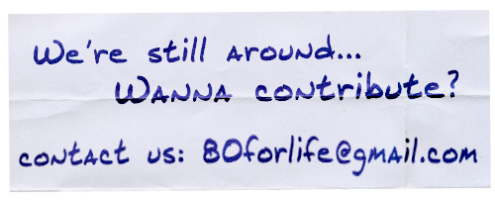
David Bowie
•January 11, 2010 • Leave a CommentBy Aleksey Boytsov
WHEN: 1966-present
CULRPITS: Himself, along with a continuously changing cavalcade of guest musicians and collaborators.
ALBUMS: David Bowie (1967), Space Oddity (1969), The Man Who Sold the World (1970), Hunky Dory (1971), The Rise and Fall of Ziggy Stardust and the Spiders from Mars (1972), Aladdin Sane (1973), Pin Ups (1973), Diamond Dogs (1974), Young Americans (1975), Station to Station (1976), Low (1977), “Heroes” (1977), Lodger (1979), Scary Monsters (and Super Creeps) (1980), Let’s Dance (1983), Tonight (1984), Never Let Me Down (1987), Black Tie White Noise (1993), The Buddha of Suburbia (1993), Outside (1995), Earthling (1997), ‘Hours…’ (1999), Heathen (2002), Reality (2003)
HOW: There are many ways to get into David Bowie’s music. I chose what may be the worst: chronologically. After falling in love with the song “Ashes to Ashes” one summer day in 2005, I proceeded to listen to it about a hundred times within the following week and decided to get some of his albums. Rather than going for the most revered ones, I started with the earliest efforts – his self-titled 1967 debut, with its childish Syd Barrett-like whimsy, and then his 1969 hippified follow-up (initially self-titled as well, but renamed in the wake of the success of the single “Space Oddity”). While the albums did not impress at first, they did intrigue me. There was something to be said for the pure sense of unfocused inventiveness that seemed to pour out of them and so I went on, eventually coming to own all of his albums in one format or another. I am, in retrospect, somewhat surprised at the path I chose, but glad for it provided me with the opportunity to see Bowie grow as a songwriter, starting as a young lad barely out of his teens and wearing his artistic ambition like an oversized coat to grow into, eventually mastering the medium of pop music with his grand combination of showmanship, personality, and damn good tunes to back it all up.
WHY: One of the things that attracted me to Bowie’s music from the beginning was his interesting and distinctive sense of melody that remains recognizable to me despite all his aesthetic shifts. There is also his undeniable aura, a cloud of personality: theatrical, confident, unafraid to be seen as pretentious or over-the-top, perhaps somewhat arrogant, most definitely self-indulgent. These qualities are largely ones alien to my own personality, but ones that are redeemed by the fact that unlike most “pretentious“ and “self-indulgent” musicians, he delivers the music. And what music!
It is fair to say that most of my current musical taste stems from my fandom of David Bowie in high school. He may not have always been as influential as his nearly-mythological image suggests — he certainly did not invent glam rock and the art rock sound of his “Berlin trilogy” was foreshadowed by Brian Eno and Roxy Music, but few other artists could so perfectly capture a wave of inspiration and make of it a brilliant work as he has done. It is, of course, important to remember that even at his most artsy, Bowie’s music is still pop at its core, and this is also the lovely thing about it. It can be pretentious without smothering and experimental without being overbearing, such as the fun album that is Lodger, one of his most overlooked “golden era” works. It features his committed but playful approach to music with numerous exercises such as “Move On,” built upon a reversed sample of “All the Young Dudes” which sounds transformed into some tribal incantation, or the delightful “Boys Keep Swinging,” on which all the musicians were told to switch instruments to ones they were not comfortable with in order to create a rough, amateurish swaggering sound with its stiff, metronomic rhythm section and messy guitar noise.
Bowie took a while to find a voice of his own: the whimsical vaudeville pop of his regretted debut and the hippie anthems of the follow-up are not as captivating as the work he would make just a few years later. Even “Space Oddity,” his main achievement of the 60’s, could have fallen by the wayside as a novelty hit with a less lucky and less persistent artist. Once he found that voice, however, he would plunge after it and emerge, having crafted what I believe to be some of the best rock albums of the 20th century. To me, his output is marked by a sense of hungry artistic ambition, the same sense which has gotten him branded as a dilettante for his sudden and seemingly groundless, but zealously pursued stylistic changes. It is this artistic hunger that, in my opinion, puts him head and shoulders above most of his contemporaries as it gave him the perseverance necessary to get past the first few years of his career and mature into the force he would become in the 70s.
SONGS: The idea of compressing David Bowie’s career into an 80-minute-long mix is a daunting one, and one whose seeming absurdity hit me the moment I had committed myself to doing just that. In the end, however, I feel that my list is a fairly good representation of the many facets of his work and his artistic personality. While almost all of his ouvre merits respect and consideration, this mix is primarily focused on Bowie’s critically acclaimed 70s albums because these really are what he is about for most of his fans. These are the prime attraction and the keystones of his influence. I made sure to include the various sides of that era: the swaggering glam of “Queen Bitch,” the bohemian mysticism of “The Man Who Sold the World,” the mutant funk of “1984” and “Station to Station,” and the shimmering romanticism of “Heroes.”
His commercial pop work in the 80s divides opinion, but while it has its fans, one can definitely say that he was not as involved in his music as before, instead focusing most of his energy on acting and thus the music is not as representative of his essence. Nevertheless, I included the infectious “Modern Love” (perhaps Bowie at his most mainstream) and “Blue Jean.” The 90s were a resurgence of his more experimental side, but also featured him jumping on others’ bandwagons (tours with NIN, etc) and in this last decade he has settled into a sort of elder-statesmanlike dignity. I’ve tried to represent the last two eras with the irrevocably 90s “Jump They Say” (a tribute to Bowie’s suicidal half-brother, Terry) and the fun Modern Lovers cover “Pablo Picasso” from his most recent release, Reality. I wish I could have included something from 2002’s Heathen, but the best material from it works only in the context of the album.
On the other hand, I have, perhaps somewhat conspicuously, left out “Space Oddity” which, though it broke the ice and allowed Bowie to proceed to fame, is not altogether representative of what he would become, and perhaps is best to forgo in favour of something less ubiquitous. A surprising challenge which I hadn’t considered before, was arranging the songs in such an order that the timbre of his voice would not clash, since the pitch he sings at changed dramatically throughout his career, from the nasal almost-falsetto of the first few albums to the deep, dramatic Scott Walker-esque tone he would adopt later.
___________________________
Aleksey Boytsov is a 19-year old college sophomore residing primarily in Ithaca, NY. He loves music and language and spends most of his free time indulging his passion for one or the other. His favourite musical artists include Belle and Sebastian, David Bowie, Jacques Brel, Kate Bush, Scott Walker, and Zemfira.
Will Oldham
•January 7, 2010 • 1 CommentBy James Sonnier
WHEN: 1993-Present
CULPRITS: Will Oldham (pickin’ and a grinnin’); assumed brothers Ned (bass and voice) & Paul (bass and mixing) Oldham; more recently, a disparate collection of female vocalists, including Dawn McCarthy
ALBUMS: There is No One What Will Take Care of You (Palace Brothers 1993); Days in the Wake (Palace Brothers 1994); Viva Last Blues (Palace Music 1995); Arise Therefore (Palace Music 1996); Joya (Will Oldham 1997); I See a Darkness (Bonnie “Prince” Billy 1999); Ease Down the Road (Bonnie “Prince” Billy 2001); Master and Everyone (Bonnie “Prince” Billy 2003); Bonnie “Prince” Billy Sings Greatest Palace Music (Bonnie “Prince” Billy 2004); Superwolf (Bonnie “Prince” Billy & Matt Sweeney 2005); The Brave and the Bold (Tortoise & Bonnie “Prince” Billy (2006); The Letting Go (Bonnie “Prince” Billy 2006); Lie Down in the Light (Bonnie “Prince” Billy 2008); Beware (Bonnie “Prince” Billy 2009) // [Note: These are studio albums only]
HOW: The older brother of one of my best friends in college told us about this guy named Will Oldham, Palace, or maybe it was Palace Brothers; we weren’t sure. We bought Lost Blues and Other Songs, an odds and ends collection of Palace recordings, but which somehow proved to be the perfect introduction to Oldham for me at the time. We holed up in my friend’s dingy frat-house room and pressed play. The mix of musical dread and lightness was intoxicating; as if we’d stumbled onto Hymns from Below. The voice was, as the New Yorker piece perfectly noted, “wild and broken.” Guitars menaced and curled back on themselves in “Riding (Electric Version),” only to open expansively around sweetly soft melodies in “Little Blue Eyes.” And the lyrics hinted that it all might come undone at any minute. I was nursing my first break-up (known to all who experience such event as: the Most Profound Experience, Ever) and the pointed, relationship songs “End of Travelling” and “Come In” were panaceas that made everything wonderfully worse. By the time Oldham’s voice broke and cracked during “Horses,” I was in full on man-crush mode.
WHY: It’s understandable why a listener might find it difficult to break into the musical world of Will Oldham. For starters, he has released over 100 recordings in the form of albums, EPs, live albums, singles, covers or collaborations under various monikers such as Palace, Palace Brothers, Palace Music, Bonnie “Prince” Billy, and his given name. Just when it seemed he had settled into the Bonnie “Prince” Billy persona, Oldham undermined this notion by slightly changing the spelling of this name. Oldham rarely gives interviews and was infamous for his shambolic early shows. The closest thing he has to a greatest hits collection is a re-recording of one of his pseudonym’s songs (the “Palace” bands) by another of his pseudonym’s (“Bonnie ‘Prince’ Billy”). He has lovingly covered Tim McGraw and Mariah Carey and sung back-up on the recording for which he is probably best known, the Johnny Cash cover of Oldham’s “I See A Darkness” on Cash’s Solitary Man album. Sometimes it seems as if Oldham is trying to drive away the casual music listener or at the very least, wreck havoc on one’s iTunes organization.
This is a shame because Oldham crafts accessible, beautifully melodic folk songs and thrilling barn burners. They’re just hidden in the Kentucky beard of his discography. Therefore, this 80 Minutes For Life will focus on providing a direct entry point into the Oldham canon, while attempting to pull from many of the varied incarnations of Oldham throughout his career.
Oldham’s music fits within that sub-genre of indie rock called “Freak-folk,” curling up beside the hushed folk of Iron & Wine, while carrying on the carnival carousing of Tom Waits. He released his first album, There is No One What Will Take Care of You as Palace Brothers, beginning a string of releases under differing versions of the Palace name. Oldham’s reclusive nature and the early releases’ focus on God and sin produced an understandable desire to see Oldham as some innocent savant just come in from the Appalachian wild. But I think the better and more honest interpretation of Oldham, as explored in a recent New Yorker article, is Oldham as an Actor, a profession he pursued before and during his musical career. The confusing name changes are really costume changes, roles taken on and shed as they suit the performer. He seems to have found a modicum of stability in the Bonnie “Prince” Billy name, consistently recording under it since 1999’s I See A Darkness.
SONGS: In my attempt to provide the best introduction to Oldham’s music, I focused on his more accessible songs, while still highlighting Oldham’s unhinged side. I also tried to pick songs that are available for download on Itunes or Lala, but I felt I couldn’t leave off some harder to find gems, like the McGraw cover or various songs off Lost Blues and Other Songs. The playlist moves in chronological order, showing Oldham’s musical development and nomial wandering. It ends appropriately enough with last year’s “I am Goodbye.”
LINK: Click on the list below to hear the entire WILL OLDHAM playlist for free on Lala.com!
_________________________
James Sonnier is an energy attorney in Houston, Texas, by day and something else by night, but he hasn’t figured that part out just yet. The patron saint of his family is Bruce Springsteen and he loves his grandmother’s biscuits.
R.E.M.
•January 4, 2010 • 3 CommentsBy Patrick Gosnell
WHEN: 1980-present
CULPRITS: Michael Stipe (lead vocals, acoustic guitar, keyboards), Peter Buck (guitar, mandolin, keyboards), Mike Mills (bass, vocals); Former Members: Bill Berry (drums)
ALBUMS: Chronic Town EP (1982); Murmur (1983); Reckoning (1984); Fables of the Reconstruction (1985); Life’s Rich Pageant (1986); Document (1987); Dead Letter Office (1987); Green (1988); Out of Time (1991); Automatic for the People (1992); Monster (1994); New Adventures in Hi-Fi (1996); Up (1998); Eponymous (1998); Reveal (2001); In Time (2003); Around the Sun (2004); And I Feel Fine… (2006); R.E.M. Live (2007); Accelerate (2008); Live At The Olympia (2009)
HOW: Amidst the cluster-cuss of the early-90’s Cobain-ia, I fell in love with the song “What’s the Frequency, Kenneth?“…I mean, in love! I had just received my first set of drums as a birthday present, and I proceeded to play along to Monster all day, every day. I had only a cursory knowledge of who R.E.M. were. I’d acquired both Green and Out of Time as gifts, but had never given them more than a couple listens each — too light and whiny I thought. But something clicked with Monster and I had found my new favorite band. Then, for the next seven years, R.E.M. decided to screw with me.
Three increasingly weird albums later, I was a confused fan. How could the same band who wrote “Near Wild Heaven” move into a “King of Comedy” phase, and wind up with “Lotus?” I just didn’t understand the progression. So I decided to research R.E.M. in a way I’d never done for any other band. I bought every single one of their albums starting with Murmur, and devoted two weeks to each one while listening to nothing else. This process allowed me to hear the subtle shifts in style and emphasis that had evolved within the band over the course of two decades. I finally felt that I understood where this band, whose drummer had quit and who had gone from playing with mandolins to experimenting with computer-generated sounds, was coming from (as well as where they were headed.)
“Moral Kiosk” from Murmur
WHY: Whether they’re recording poppy jangle rock or psychedelic electronica, there is no denying R.E.M.’s pioneering status in American alternative rock. From Peter Buck’s distinctive guitar sounds, to Mike Mills’ astute harmonies and Michael Stipe’s incisive lyrics (both mumbled and shouted), R.E.M. have found a way to mesh political and worldly concerns with clichés-be-damned rock stylings. While not everyone will enjoy all of the band’s stylistic choices over the years, I think they should be commended for willingly taking those creative risks. Transformation is not something that is always applauded in American pop culture, but it has certainly worked out for the guys in R.E.M., for they have produced some of the best alt-rock songs of the last quarter-century.
“You Are The Everything” from Green
SONGS: I’ve set the songs in chronological order to give listeners the same transformative experience that I underwent some ten years ago. My list includes one or two representative tracks from each of their studio recordings (except for Fables of the Reconstruction, which is the musical equivalent of watching your grandmother knit), and I feel that it documents the band’s evolution while maintaining a balance between hits and deep cuts. Naturally, R.E.M.’s first single “Radio Free Europe” kicks things off, followed by two personal favorites, “Moral Kiosk” and “Harborcoat” — two songs that my own erstwhile band, Your Former Lover, stole from heavily! The next six songs showcase Michael Stipe’s growth as a front-man, adding both vigor and political overtones to his vocals. Including the breakthrough hits “The One I Love” and “Losing My Religion,” these songs created the momentum that would carry R.E.M. to the leading edge of 90’s alternative rock. “Texarkana” shows us that Mike Mills is the secret weapon behind R.E.M.’s sound, adding a dynamic lyrical quality to his efficacious bass work. “Drive,” “Nightswimming,” “What’s the Frequency, Kenneth?” “Strange Currencies,” and “Bittersweet Me” take us through the high point of the band’s career, before the confusing grey period of post-Berry experimentalism known as Up, Reveal and Around the Sun. I’ve rounded out the list with two tracks from the surprisingly crunchy Accelerate, “Living Well Is the Best Revenge” and “I’m Gonna DJ” which show that even through all their costume changes, R.E.M. can still deliver an alt-rock gem.
“What’s The Frequency, Kenneth?” from Monster
WHAT’S MISSING: The problem with releasing 15-plus albums means that R.E.M. have a plethora of great songs that just won’t fit onto an 80-minute CD. If you enjoy what’s on my list then check out “Catapult,” “Begin the Begin,” “Cuyahoga,” “Radio Song,” “Crush With Eyeliner,” “So Fast, So Numb,” “Bad Day,” and my personal favorite “The Sidewinder Sleeps Tonight.” If you’re more of an album person, then I would definitely recommend their debut Murmur, their critical success Automatic for the People and their most recent (and rockin’) Accelerate to learn R.E.M.’s essential phases.
“I’ve Been High” from Reveal
LINK: Click on the list below to hear R.E.M. for free on Lala.com!
___________________________
Patrick Gosnell is co-founder and chief designer for 80 Minutes For Life. He spends his days practicing photography, listening to music constantly, and spending way too much time reading design blogs. He and his wife, Karen, enjoy completing puzzles, watching Community, and eating Thai food with close friends. You can check out his portfolio here.
The Smiths
•December 10, 2009 • 1 Comment
By Marius Messinese
WHEN: 1984-1987
CULPRITS: Morrissey (Vocals, Piano), Johnny Marr (Guitar, Keyboards, Mandolin, Bass, Harmonica), Andy Rourke (Bass, Cello), Mike Joyce (Drums, Backing Vocals), Craig Cannon (Bass, Rhythm Guitar, 1986)
ALBUMS: The Smiths (1984), Hatful of Hollow (1984), Meat Is Murder (1985), The Queen Is Dead (1986), Strangeways, Here We Come (1987), Louder Than Bombs (1987)
HOW: The first time I’ve heard about The Smiths was on some “50 essential albums” list of a French magazine in 2002. The Queen Is Dead ranked 48. I was at this time of my life in my quest of having good musical tastes so I tried hard to find all those 50 albums. I bought it some months later and give it a listen with enthusiasm. Meh. I didn’t like what I was hearing, it lacked manly power (!!), Morrissey’s suave voice was hard to appreciate after a first listen, at least in my case, and I guess I was too young to fully appreciate the lyrics. Years pass and one night Alain Delon on the sleeve of The Queen Is Dead won’t stop yelling at me: “Play me! Play Me!” OK, OK, you certainly deserve another try. This time again, not a particularly good listen — I really enjoyed the eponymous song though.
The revelation came not so long ago; I guess it was in May of this year, discovering my favorite Smiths song, “The Headmaster Ritual.” From that moment I had a totally different vision and understood all the catchiness and true essence of The Smiths. I came back to all their releases, and they became one of my top 5 bands. Funny how things can change.
WHY: First of all I must say: I love The Smiths entire discography, and there’s very few artists in this category. Every single they’ve released is a pop gem. And believe me, I don’t use to word “gem” lightly. Their songs are gems because they catch perfectly the atmosphere of the UK at the time with a great sense of humor.
I must confess Morrissey’s lyrics are really among the greatest I know, and his neo-romantic, full-of-emotion voice is at first disturbing, then you get used to it, and you’re in love with it.
Johnny Marr is in my opinion the greatest pop guitarist, because of his shimmering sound and for his ability to find catchy melodies that go perfectly with Morrissey. Dare I say … poetry!
Behind this hypnotizing guitar-voice combo you’ll find one of my favorite rhythm sections, Andy Rourke and Mike Joyce. Rourke is my favorite in The Smiths — his sound enhances the whole poppy perfection and his bassline are always on the top; plus he can get really funky (“Barbarism Begins at Home“). Mike Joyce is just perfect and solid behind the drums. Together they are the best band making pop. To me, they are the definition of pop.
SONGS: I try to sum up here the essence of The Smiths. The songs come from all their studio releases, I only excluded Rank (1988) — being a live album it doesn’t seem to fit in.
I also did my best not making a “singles list,” as you probably know how hard it is to find a Smiths song that’s actually not a single. Of course you’ll find here classic Smiths songs because they simply cannot be avoided, but you’ll also find poppy B-Sides and juicy non-single material. I must have missed a lot of essential Smiths songs, but hey, 80 minutes is the rule! So here’s 80 minutes with the Smiths. Hope you’ll enjoy this perfect introduction!
LINK: Click on the list below to hear THE SMITHS for free on Lala.com!
_________________________________
Marius Messinese is a 22 year old creator from France, making funky and colorful shirts who loves to have everybody on the streets wearing great clothes ans listening to quality music. He spends all of his time finding new songs and artists and all of his nights listening to them.

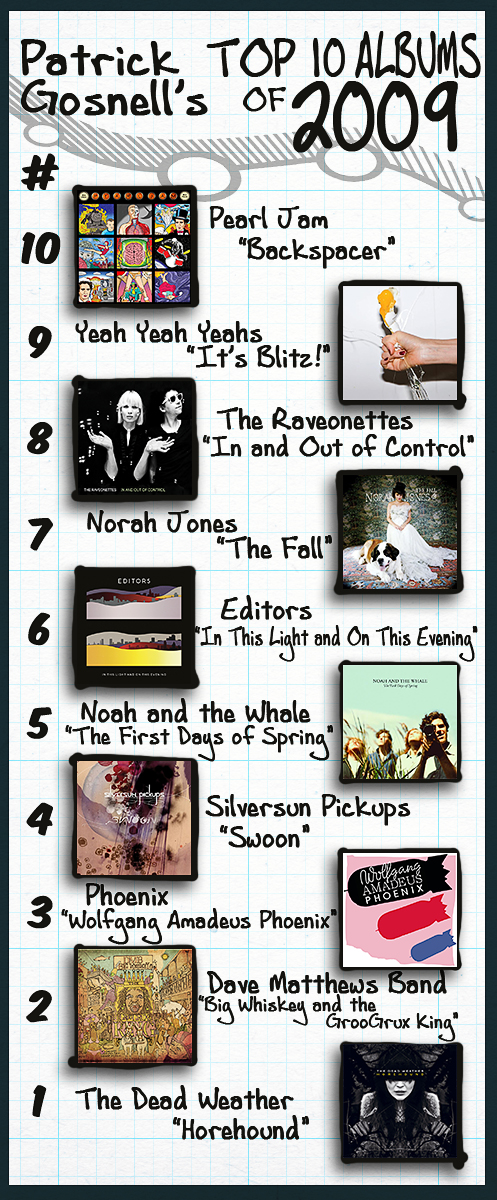








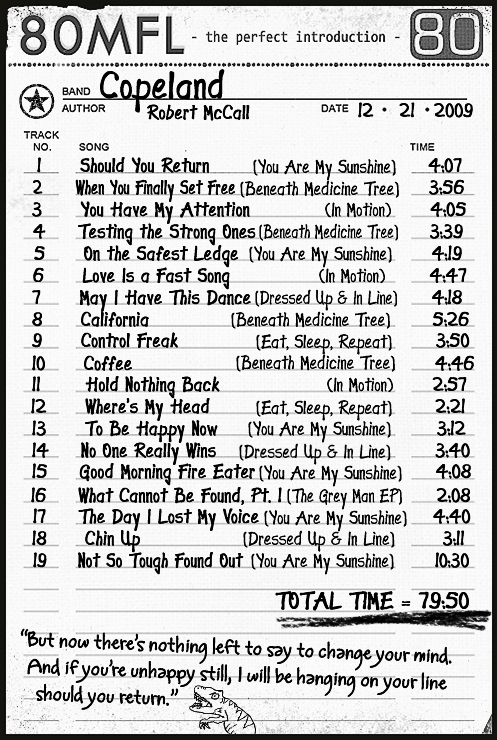

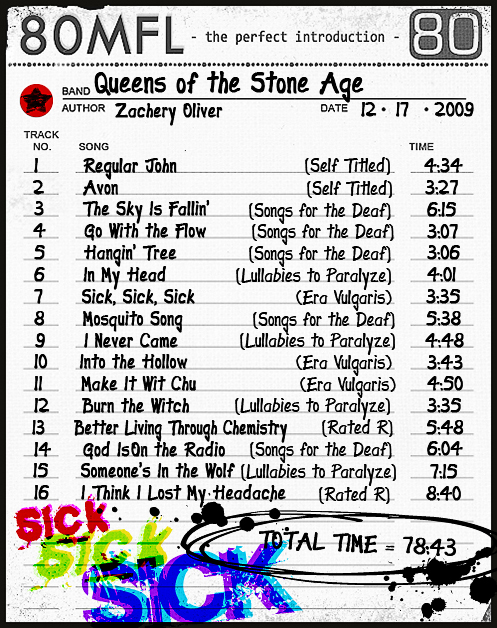
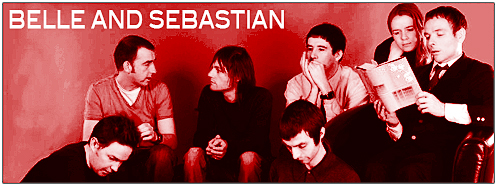
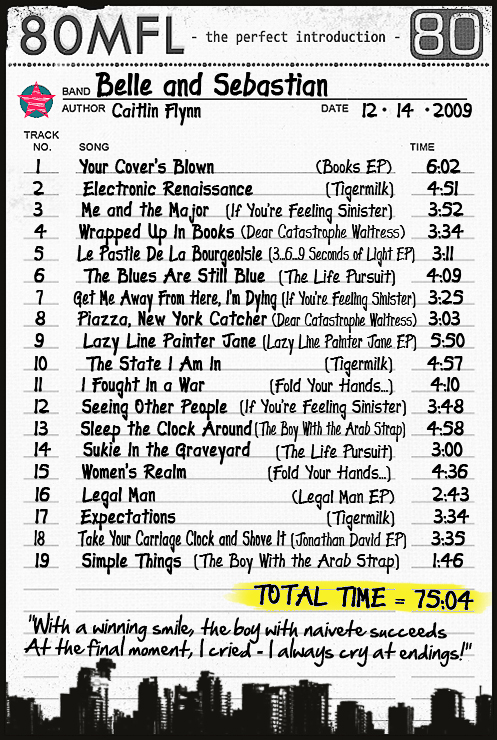
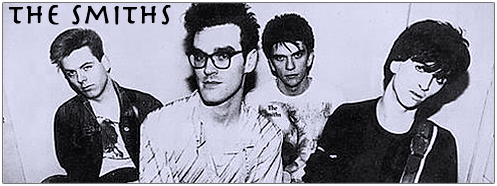

RECENT COMMENTS